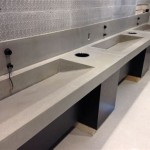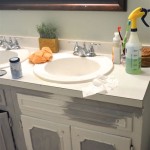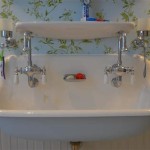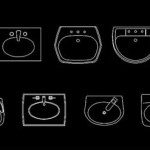How To Remove a Bathroom Door Handle With Integrated Lock
Removing a bathroom door handle with an integrated lock is a task that homeowners may encounter for various reasons. These reasons can include replacing a broken or outdated handle, re-keying the lock, or simply needing to remove the door for painting or other repairs. While the process can appear daunting at first, understanding the mechanism of the handle and lock, and carefully following a step-by-step approach, can make the task manageable for individuals with basic DIY skills.
The design of a bathroom door handle with an integrated lock often combines the functionalities of a standard door handle with a privacy lock mechanism. This lock is typically activated by a small button or twist on the interior side of the handle, preventing the door from being opened from the outside. Due to this dual functionality, the removal process might require a few extra steps compared to removing a standard passage handle without a lock.
Before beginning the removal process, it is crucial to gather the necessary tools to avoid frustration and potential damage to the door or handle. The following tools are typically required:
*Screwdriver Set: A Phillips head and potentially a flathead screwdriver will be needed, as different manufacturers use different screw types.
*Small Allen Wrench Set: Some handles utilize set screws, which require an Allen wrench for removal.
*Pliers: Pliers can be helpful for gripping and manipulating small parts if necessary. Needle-nose pliers may be especially useful.
*Safety Glasses: Protecting the eyes from flying debris is essential.
*Work Gloves: Gloves provide a better grip and protect hands from sharp edges.
With the tools prepared, the removal process can begin. It is recommended to work in a well-lit area and have a small container or tray to keep the screws and small parts organized to avoid losing them. Documenting the process with photos can also be beneficial, especially if re-installation is planned.
Key Point 1: Identifying the Type of Handle and Lock Mechanism
The first step is to carefully examine the door handle and identify the specific type of mechanism. Bathroom door handles with integrated locks come in various designs, but they generally fall into a few common categories. Some handles have visible screws, while others have hidden screws covered by a faceplate or escutcheon. Identifying the screw locations is crucial for a smooth removal process. Some handles may also incorporate a small button or lever that needs to be manipulated to release certain parts.
One common type features a push-button lock located on the interior handle. The exterior handle usually has a small hole that allows the lock to be opened from the outside in case of emergency. Another type involves a twist mechanism on the interior handle. Understanding which type of handle is installed will determine the specific steps required for removal.
Look carefully for any visible screws on the handle plates. These may be located on the interior or exterior side of the door, or both. Check for any small set screws located on the side of the handle near the door edge. These set screws often secure the handle to the spindle, which connects the two handles through the door.
If no screws are immediately visible, examine the handle plates (escutcheons) that cover the mounting hardware. These plates may be removable and held in place by small tabs or friction. Gently try to pry the plate away from the door using a flathead screwdriver, being careful not to scratch the door's surface. Some plates twist off or slide upwards or downwards to expose the underlying screws.
Once the type of handle and lock mechanism is identified, the appropriate removal steps can be determined.
Key Point 2: Removing the Handle Components
After identifying the handle mechanism, the next step involves carefully removing the handle components. This typically involves removing the screws, detaching the handles, and disassembling the lock mechanism.
If visible screws are present, use the appropriate screwdriver (Phillips or flathead) to remove them. Turn the screws counterclockwise until they are completely free. Place the screws in a safe location to avoid losing them.
If the screws are hidden beneath a faceplate or escutcheon, carefully remove the plate as described earlier. Once the plate is removed, the screws should be visible and accessible. Unscrew them and store them safely.
If the handle has a set screw, use the appropriate-sized Allen wrench to loosen it. Turn the Allen wrench counterclockwise until the set screw is loose enough to allow the handle to slide off the spindle. Once the set screw is loosened, gently pull the handle away from the door. It may be necessary to wiggle the handle slightly to free it from the spindle.
With the handles removed, the spindle should now be accessible. In some cases, the spindle will simply slide out of the door. In other cases, it may be necessary to push the spindle from one side of the door to the other. If the spindle is stuck, gently tap it with a hammer using a block of wood to protect the door's surface.
Next, remove the latch plate on the edge of the door. This plate is typically held in place by two screws. Unscrew the screws and remove the plate. This will expose the latch mechanism.
Finally, remove the latch mechanism itself. This mechanism is usually held in place by screws or by friction. If screws are present, remove them. If the latch mechanism is held in place by friction, gently push or pull it out of the door. It may be necessary to use a screwdriver to gently pry it loose. Be careful not to damage the door's mortise (the hole in the edge of the door where the latch mechanism is housed).
At this point, all the components of the handle and lock mechanism should be removed. Inspect all the parts for damage and clean them if necessary. If the handles are being replaced, compare the new handles to the old ones to ensure they are compatible.
Key Point 3: Addressing Potential Obstacles and Troubleshooting
Despite careful planning, certain obstacles may arise during the removal process. These obstacles can range from stripped screws to stuck components. Understanding how to address these common issues can prevent frustration and potential damage to the door or handle.
Stripped Screws: Stripped screws are a common problem, especially with older handles. If a screw is stripped, the screwdriver will not be able to grip it properly, making it difficult to remove. There are several methods for dealing with stripped screws.
*Rubber Band Trick: Place a wide rubber band over the screw head and then insert the screwdriver. The rubber band can provide extra grip.
*Steel Wool: Similar to the rubber band trick, a small piece of steel wool can be placed between the screwdriver and the screw head.
*Screw Extractor: A screw extractor is a specialized tool designed to remove stripped screws. It involves drilling a small hole in the screw head and then using the extractor to grip the screw and turn it out.
*Pliers: If the screw head is protruding slightly, pliers can be used to grip the head and turn the screw.
Stuck Components: Sometimes, handles or latch mechanisms can become stuck due to paint, rust, or debris. If a component is stuck, avoid using excessive force, as this can damage it.
*Penetrating Oil: Apply a penetrating oil, such as WD-40, to the stuck component and let it sit for several minutes. The oil will help to loosen any rust or debris that is causing the component to stick.
*Gentle Tapping: Gently tap the component with a hammer using a block of wood to protect it. The vibrations can help to loosen it.
*Wiggling: Gently wiggle the component back and forth to help break it free. Avoid using excessive force.
Incorrect Tools: Using the wrong tools can also lead to problems. For example, using a screwdriver that is too small can strip the screw head. Always use the correct tool for the job.
Broken Parts: If a part breaks during the removal process, it may be necessary to replace the entire handle and lock mechanism. Take the broken part to a hardware store to find a suitable replacement.
By anticipating potential obstacles and having the appropriate tools and techniques at hand, removing a bathroom door handle with an integrated lock can be a straightforward and successful undertaking. If at any point the process becomes too difficult or complex, it is advisable to consult with a professional locksmith or handyman.

How To Remove Door Handle With A Bathroom Lock Hiatt Hardware

How To Remove Door Handle With A Bathroom Lock Hiatt Hardware

How To Remove Door Handle With A Bathroom Lock Hiatt Hardware

How To Fit A Bathroom Thumb Turn Lock Fantastic Services

Handles For Doors

How To Fix Common Door Issues Locking Problems With Internal Doors

Remove Kwikset Interior Door Knob With No S Diy

Bathroom Door Handles On Backplate With Thumb Turn Handle King

Remove Door Lock Without Visible S And Stuck Latch Spindle

Diy Project Installing A Bathroom Lock
Related Posts







